
Published:
Readtime: 11 min
Every product is carefully selected by our editors and experts. If you buy from a link, we may earn a commission. Learn more. For more information on how we test products, click here.
While we love to talk about tailoring on Man of Many, we’ve never really delved into the wide world of thread count, and the different types of suit fabric that make up the final product when you take the plunge and decide to get your suit tailored. With myriad options for suit fabric that can frankly obfuscate the whole affair, it’s little wonder people find the whole system of numbering thread counts and what fabric to use where a little confusing. One man who knows a great deal about this, however, is Melbourne’s Sam Diamond, founder of Samuel Diamond Tailors.
You might also like:
Top 10 Mistakes Guys Make When Buying a Suit
A Complete Guide to Buying a Tuxedo
Made to Measure – Man of Many’s Guide to Buying a Tailored Suit
Like many Aussie men who flog sartorial elegance for a crust, Diamond started out life in the corporate world, and made the shift to tailoring when he realised he needed to share his passion with an ever-daggy collection of fellow blokes, many of them working in his very own office.
“It all started when I worked as a lawyer and was completely bored by the average corporate ensembles I saw around me. My style changed dramatically after I returned from a holiday to Italy. I was completely blown away by the men’s flair, particularly in Milan, Rome and Florence. I wanted to learn how to dress well and help others improve on this area in Melbourne” Sam tells us.
We caught up with Sam to find out more about the intricacies of thread count and the suit fabrics used in top-notch tailoring.

Let’s start with some of the more confusing terminology around thread count. What do the numbers in 110s, 120s, 150s etc mean when talking about suit fabric?
The number refers the fineness of the individual fibres that are spun into the yarn, which is woven into the fabric before it’s sewn into a suit. The higher the number, the thinner the fibres, the smoother the fabric (and also the more expensive it is). The Super number or “micronage” is only one measure of quality, and not a very reliable one.
The 150s will almost always cost more, because the raw wool required to make it costs more, and people will pay more for it. 150s are certainly a luxury fabric, but that doesn’t necessarily make it better. Think of fabric like a single malt Scotch whisky. You can have a 12 year old or an 18 year old etc – the 18 year old is a higher price because it’s considered better, however, that doesn’t mean that the 12 year old isn’t also stunning. If it’s what you like and it’s what you can afford, then it’s perfect.
For an everyday suit that’s great quality, anything 100% wool is key and 110s, 120s, 130s are perfect for Australian climates.
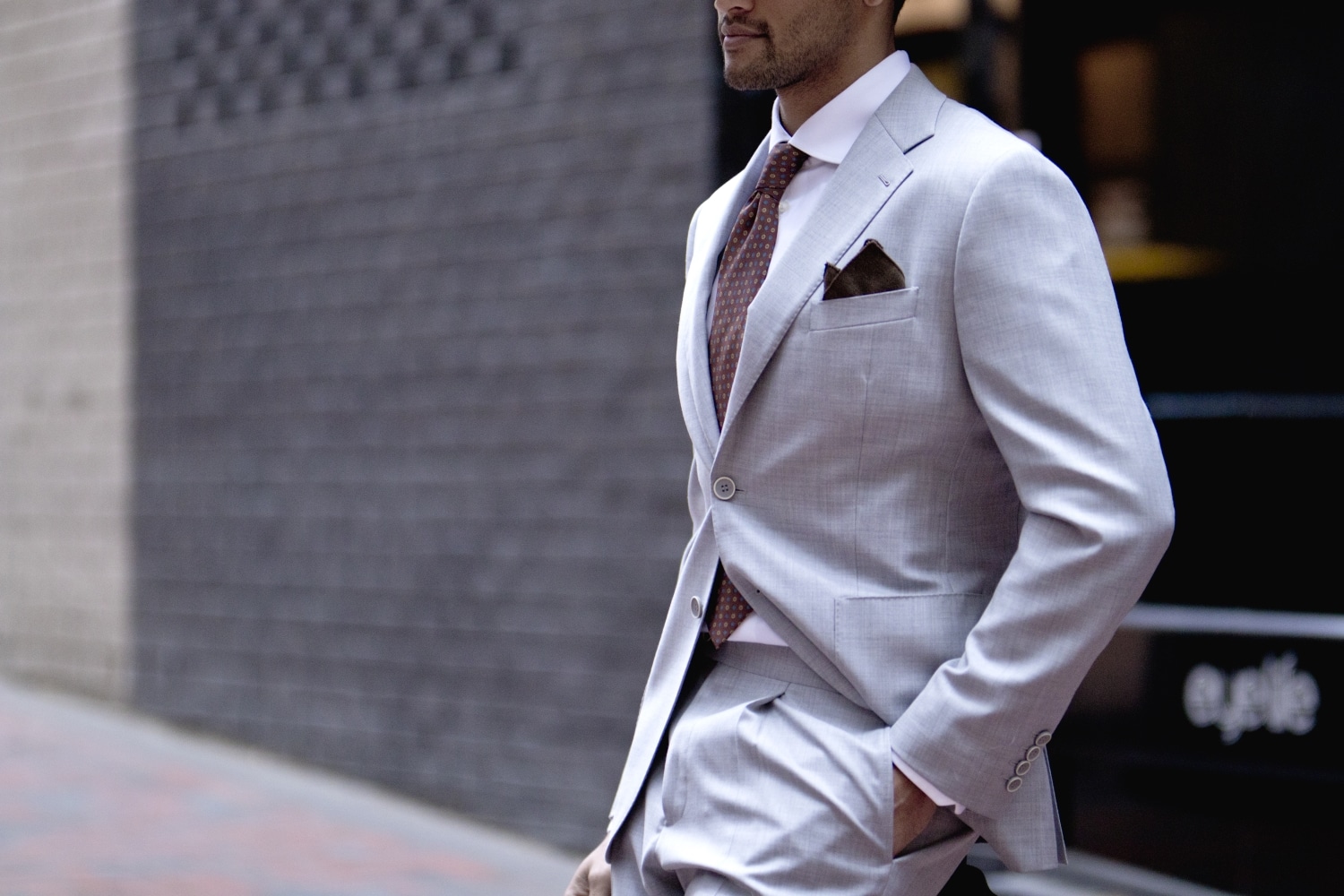
Are some suit fabrics or materials more appropriate for certain occasions (i.e. linen in a day suit, etc)?
Aside from 100% wool, most other fabrics are seasonal. Thicker wool, tweed and flannels are more appropriate in cold conditions. Conversely, linen, seersucker and cotton are summer fabrics. As a result we see more of these warmer weather fabrics at events like weddings.
As a general rule, 100% wool suits, more specifically Merino wool, are the most versatile and appropriate for all occasions. They breathe in summer and keep you warm in winter. During the warmer months, linen is great too, although there are several things to consider with linen: it creases significantly easier than wool, although that’s part of the look. It can also be rough against your skin. If you’re going down the linen path, I’d suggest a blend of 92% linen and 8% silk to make the fabric smoother.
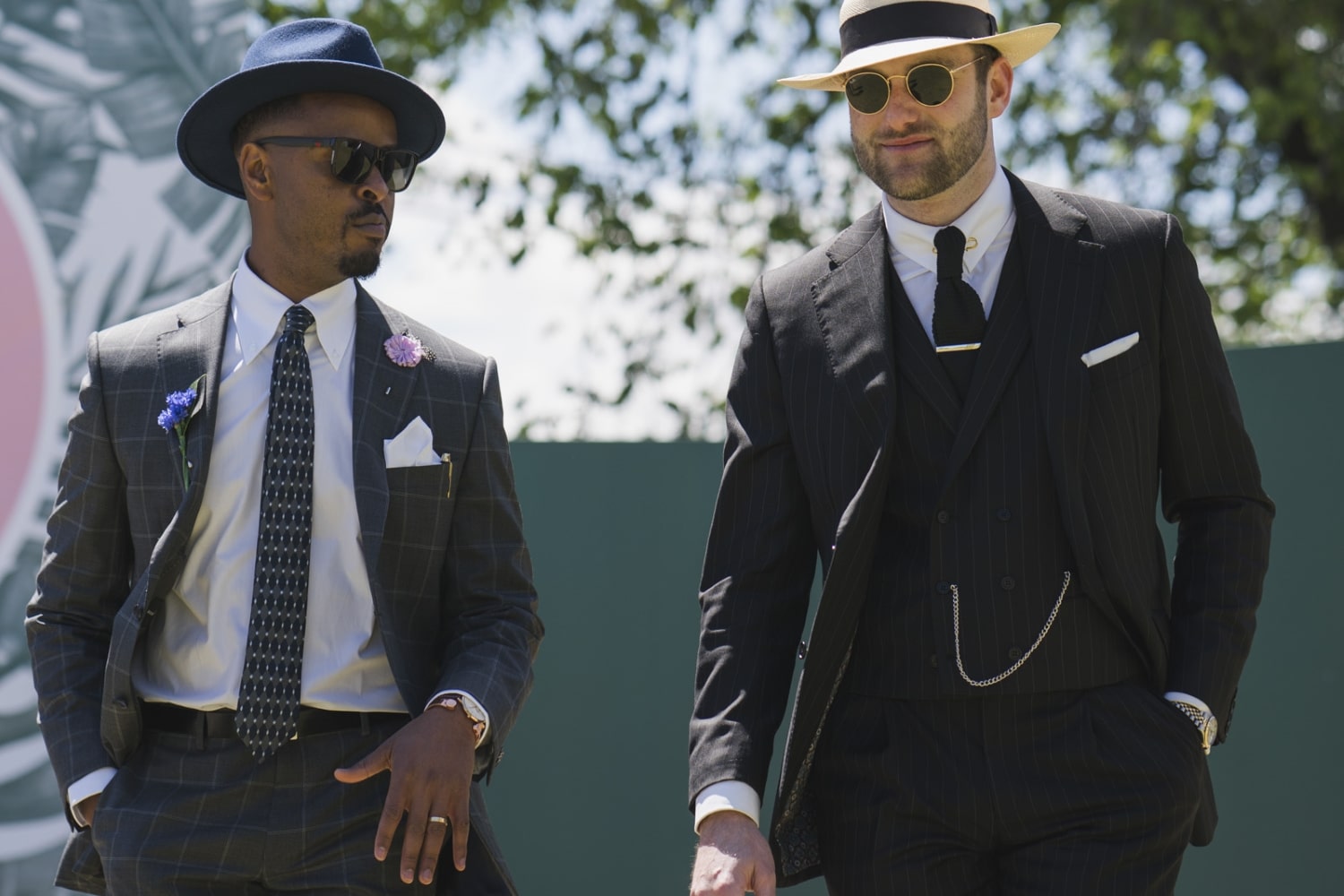
What’s the rule with synthetics? Is a small amount if viscose ever okay in Australia because it’s a warm climate?
Personally, I would never go for synthetic or blends of synthetic for several reasons. 100% wool suits will last for years if looked after correctly. Suits made of synthetics can start to lose their shape, become ingrained with dirt or stains and often develop a shiny look around the pockets, knees and at the elbows. Synthetics are an inferior fabric on an environmental level also; most man-made and synthetic fibres are made from oil, which is non-renewable (much like the plastic bags and other synthetics they’re extremely slow to degrade).
Synthetic fibres also suffer from wrinkling and creasing more. Wool can be left on a hanger or steamed and the wrinkles will fall out much easier due to the natural elastic recovery. Although I recommend never dry-cleaning a suit, a synthetic suit will be ruined very easily from a only a few dry-cleans. It’s important to also note that when it comes to aesthetics of the suit, the style and drape of the garments always look best with 100% wool. Wool will drape naturally and mould to your body over time.
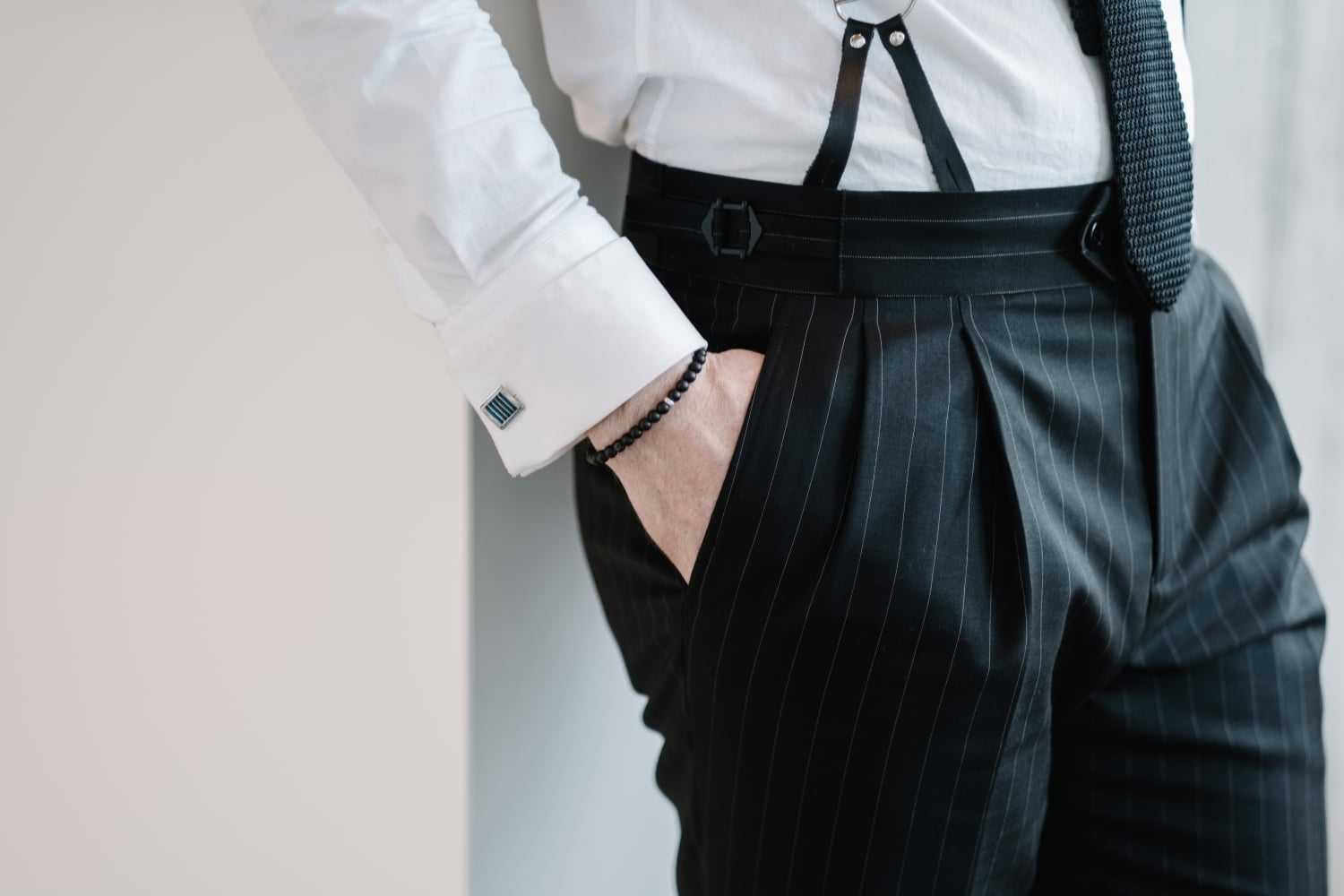
Australia is famous for Merino wool – do we appreciate this and use it enough as a suit fabric?
It’s true when people say that Australia was built on the back of the sheep; Australian Merino wool is the best fibre for men’s suiting and is the most versatile fabric in the world. It has a long history and heritage that stretches back over 200 years.
In 1797, sheep capable of growing very fine wool arrived from South Africa, but had originally come from Spain, where sheep has been bred and raised for their wool quality since the Romans introduced them around 2,000 years ago. In the 1800s, a gent called John Macarthur started selectively breeding sheep on his farm close to Sydney to make the wool fibres even finer. As the industrial revolution was kicking off, the first bales were sent to the UK. The Poms where very impressed with the wool’s quality in term of its fineness, white and bright colour, so they started to purchase and import more and more, which accelerated the growth of the Australian wool industry. Despite the adversity at times through war and drought, the industry continued to flourish at a rapid rate.
By 1870, Australia had become the largest producer of wool in the world, then in 1916 Australian wool first became a ‘must have’, when Coco Chanel made tailored jersey suits for women. The fineness and softness of Australian Merino wool was apparently the key factor that enabled her to make such garments. Australian wool became the first fibre of choice among top designers, a position it still holds today. If you take a look at the top brands such as Emenegildo Zegna, Paul Smith, Dior, Armani, Tom Ford, Hugo Boss or the tailors on Savile Row, most of their products on offer are made from Australian Merino wool. Of the wool currently produced in Australia, about 99%, is exported to the key manufacturing centres of the world. Italy and the UK remain very important markets, particularly for men’s style. Every year, Australia supplies the world with over of 80% of all Merino wool.
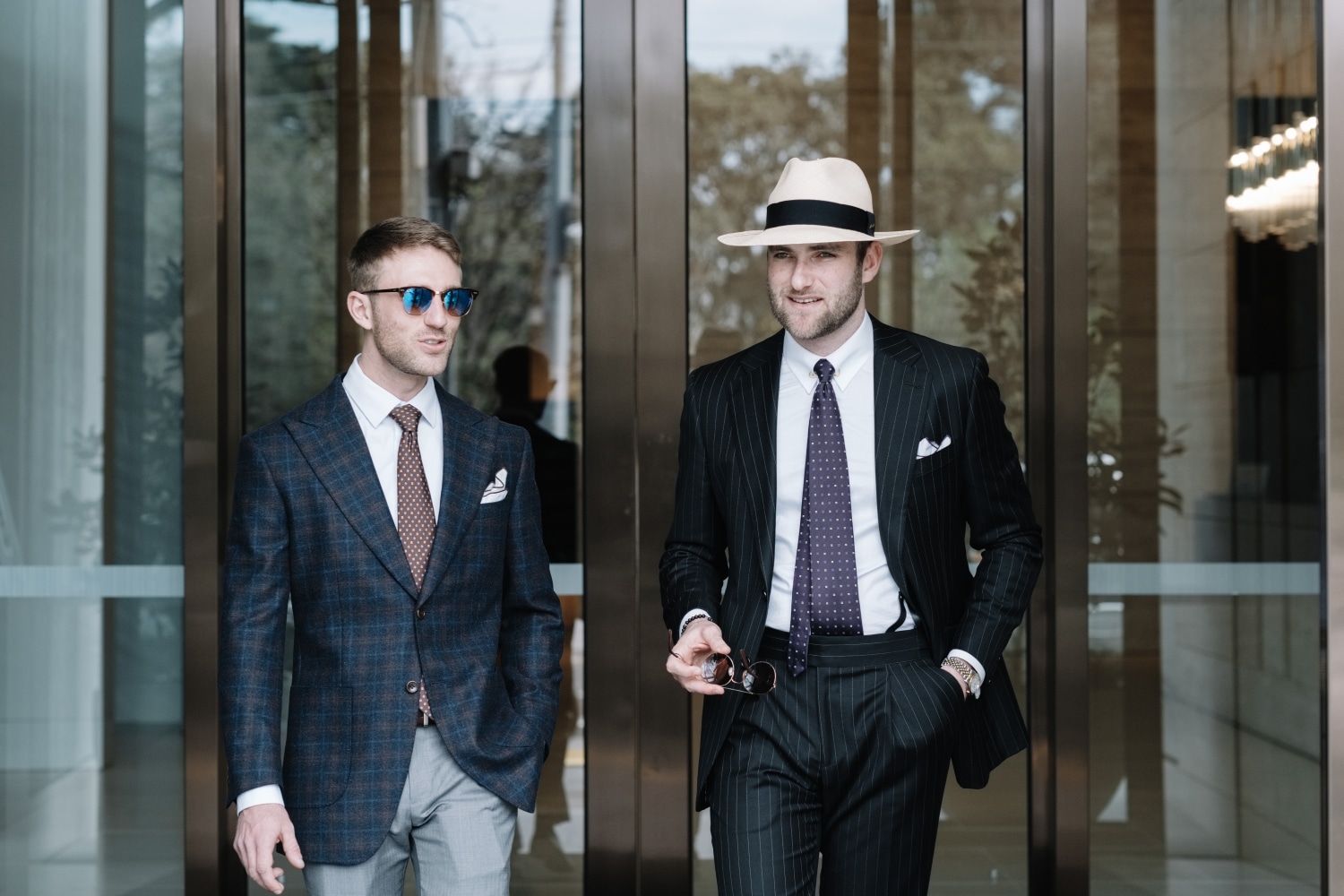
Are there any massive no-nos when selecting fabric for a tailored suit?
Ultimately you want a suit that is going to fit your purpose; I don’t want my clients to walk into a room and have someone say: “That’s a nice suit!”, I want them to walk into a room and for people to say: “You look great!”
I know it sounds cliché, but it’s more than just the suit. It’s about your style and the way that you wear the suit. How you style your accessories, shoes, pocket square, watch, haircut, and body posture are all very important in communicating who you are. Accessories can enhance your look and really create a beautifully balanced ensemble, or they can destroy it completely.
The suit is an extension of yourself and should be worn as a second skin. I want it to be something that people feel comfortable in, that enhances their life and that makes a great impression both personally and professionally. I never have any no-nos, because there’s no right on wrong. There are certain rules that exist, such as never do up the last button on the jacket etc. These rules exist, but how you choose to observe them is completely up to you. Style is such an individual thing. It took me almost 30 years to find my own.

What are some of the more specific benefits of wool?
Wool is breathable, allowing air and moisture to pass through the fabric in both directions. Wool also has natural anti-static properties – this minimises the possibility of any build up of static electricity in the garment, which would cause it to cling to the body making the wearer feel uncomfortable, as well as the presence of dust and lint. It is naturally renewable and biodegradable. It has a stunning drape and style. It retains its shape with natural wrinkle recovery and stretch properties.
Merino wool fabrics and suits will always be more expensive than suits made from cotton, man-made fibres, or where wool has been blended with polyester, however when it comes to value for money, men’s suits made from 100% wool or wool-rich suits represent the best investment.
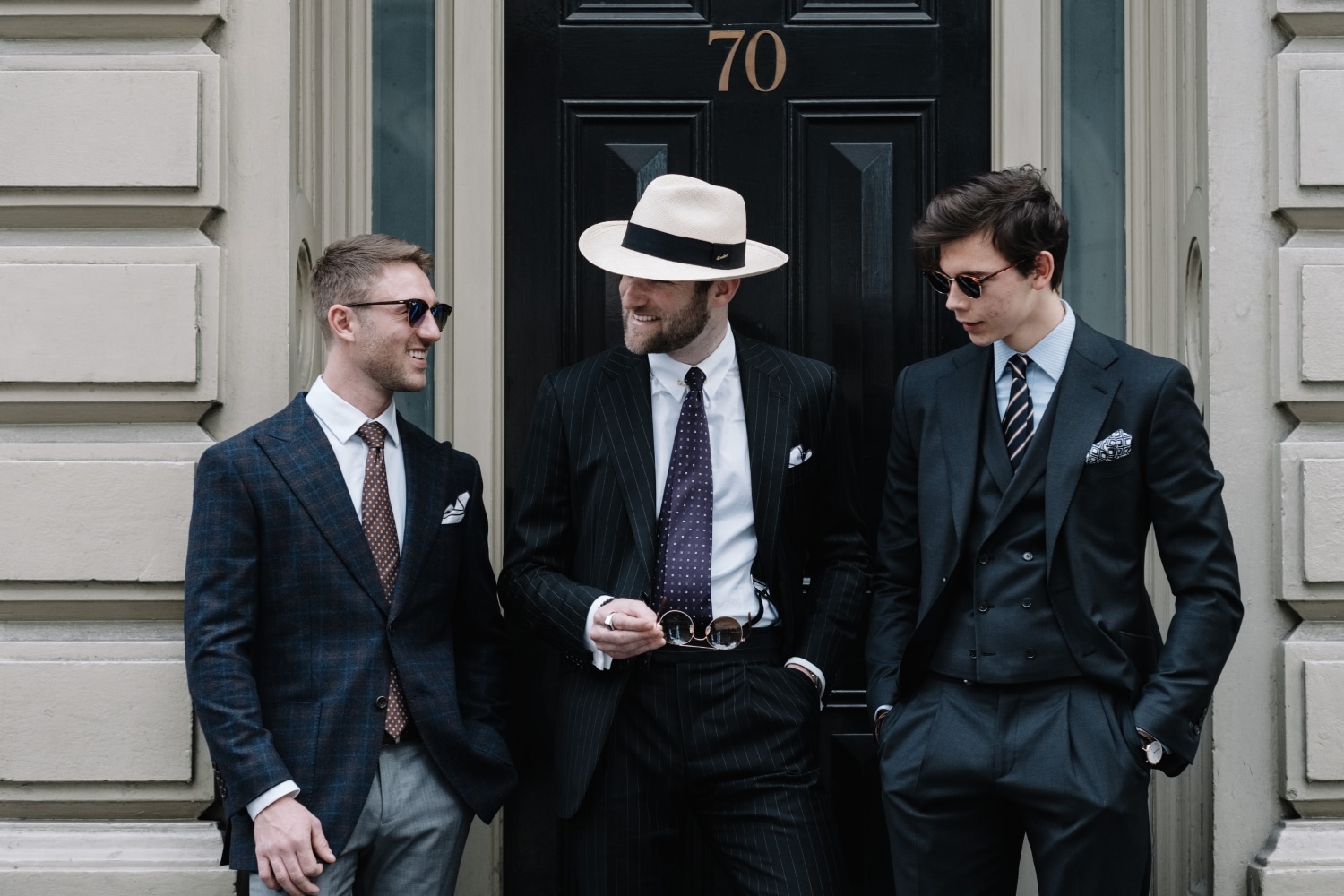
And how about debunking the myth that wool is just a winter fabric?
It’s a complete myth. If you consider the environment that Merino sheep live in, they need to be warm in winter and kept cool in summer. This versatile quality to the Merino fabric is certainly applicable to humans wearing wool suits. Wool is self-thermoregulating – by producing a micro-climate it keeps the wearer cool when it’s hot, and warm when it’s cold.
The craftsmanship of the suit is also quite important. Between the layers of fabric is a canvass of horsehair, which provides insulation and allows the suit to gradually mould to shape the contours of your natural body shape. Full canvass suits are seen as the best and they’re also more expensive because more work and materials are required. However half canvass suits are also stunning and are probably most appropriate for Australian climates.

How should guys best care for a suit that’s made out of fantastic fabric?
Firstly, never have your suits dry-cleaned. Instead, have your suits steamed and brush it gently to remove any dirt or dust. Unless you spill red wine or drop a meat pie with sauce on your suit, never have it dry cleaned! Dry cleaning is the fastest way to ruin a suit, even more so if it isn’t 100% wool. If you need to travel for business, hang the suit for the flight. If that’s not an option, keep it in a suit bag. When you arrive at your destination, immediately hang the suit in the bathroom, run the hot water for 5 mins with the door shut and the fan off. Leave the suit in the steam with the door shut for 5-10 mins to remove the wrinkles.
If you are a regular suit wearer, invest in a steaming machine – you can buy them from about $50. They are very easy to use and are incredibly effective. A sticky fabric roller is also a good idea if the suit is a dark colour to remove little hairs that you might pick up from your pet or around the house. Also, quality coat hangers are a must – they provide that great support to the shoulders and will keep the suit in good shape.
You might also like:
Top 10 Mistakes Guys Make When Buying a Suit
A Complete Guide to Buying a Tuxedo
Made to Measure – Man of Many’s Guide to Buying a Tailored Suit
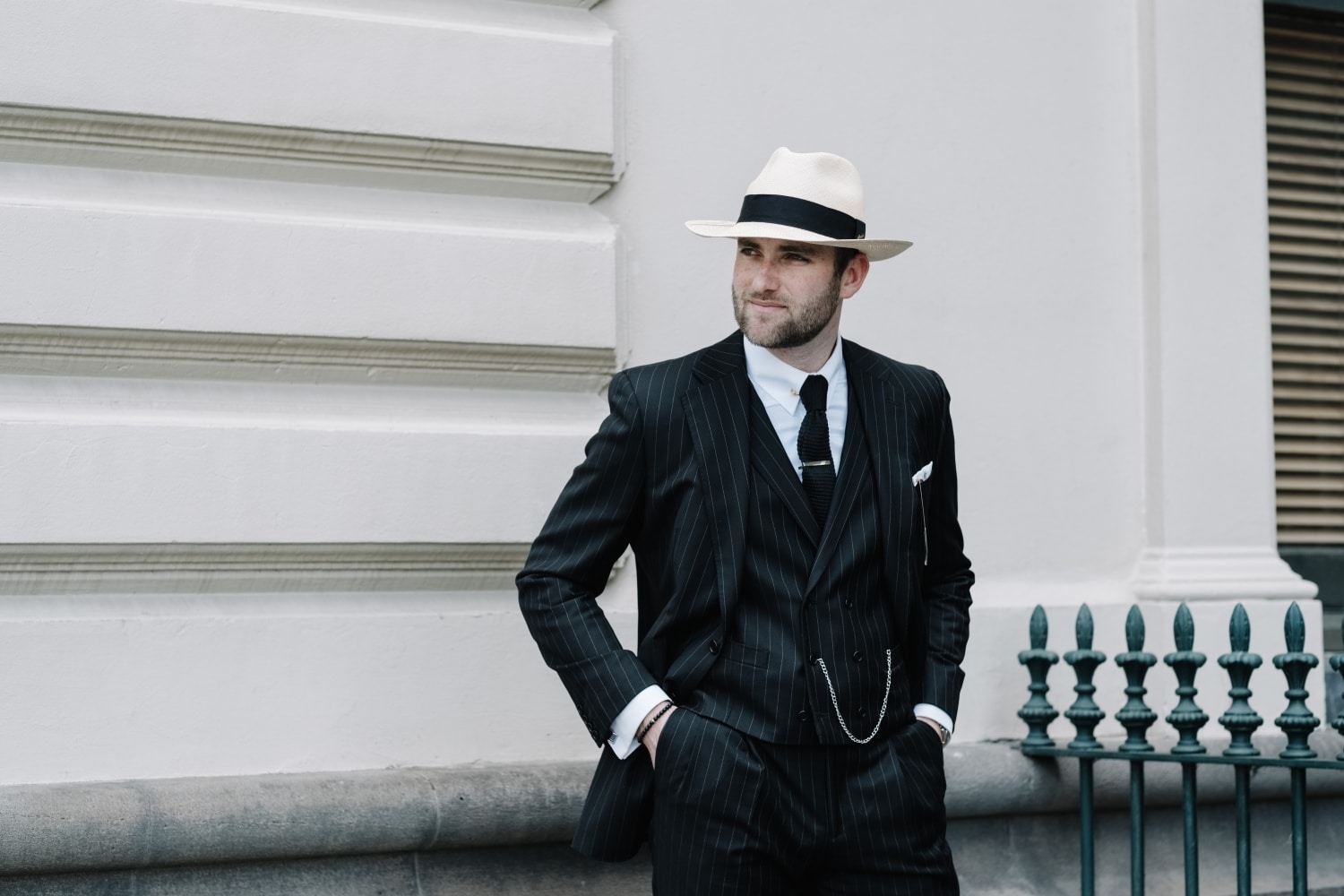
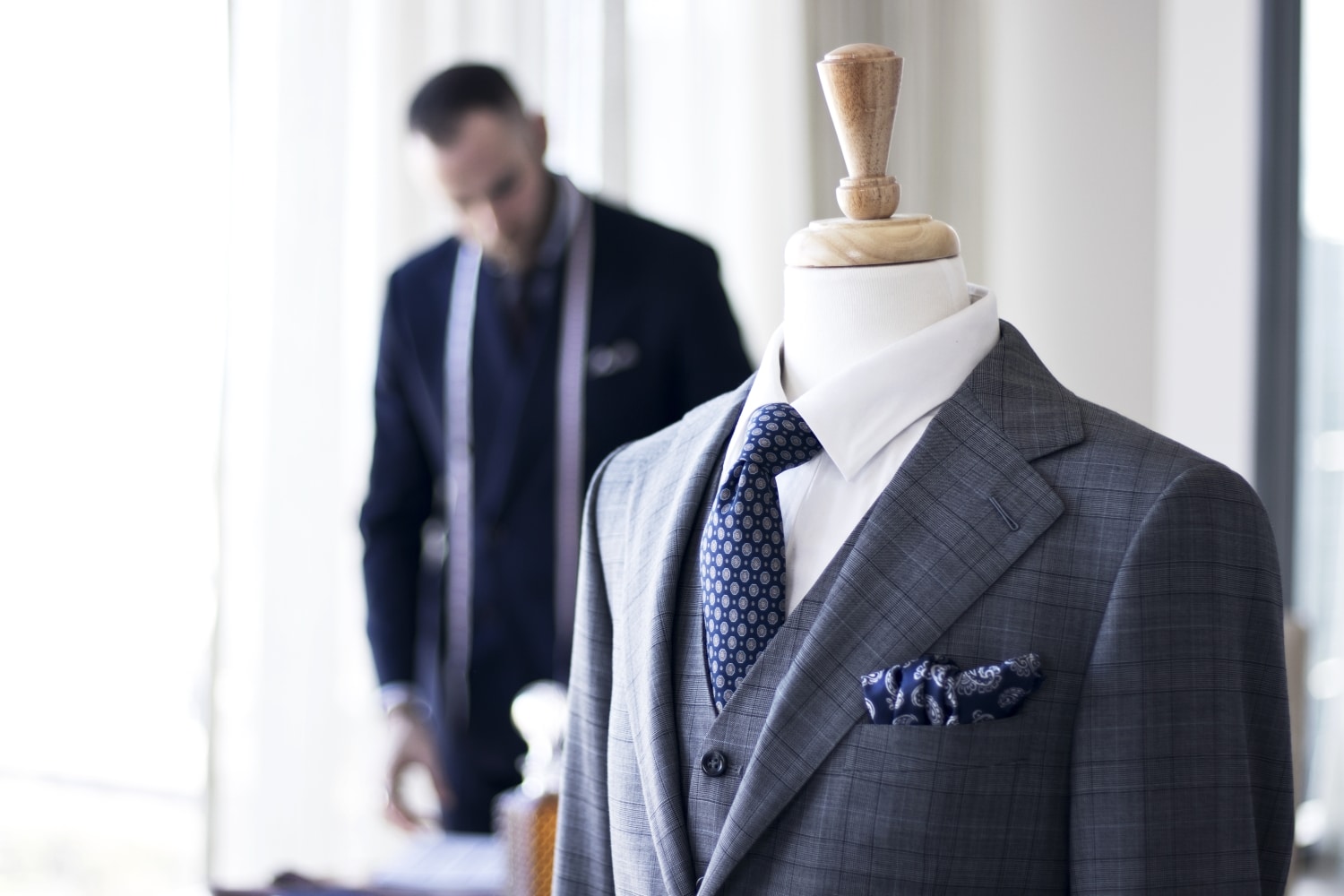

General FAQ
Merino Wool is a great fabric for a suit because of its fine and soft texture.
The best materials for a suit are wool, cashmere, linen, cottton, silk, and velvet.

















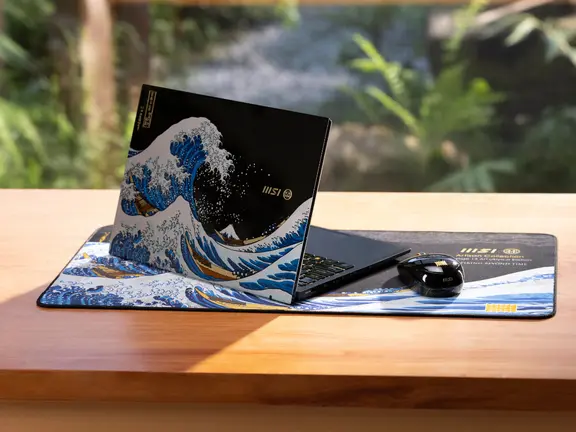






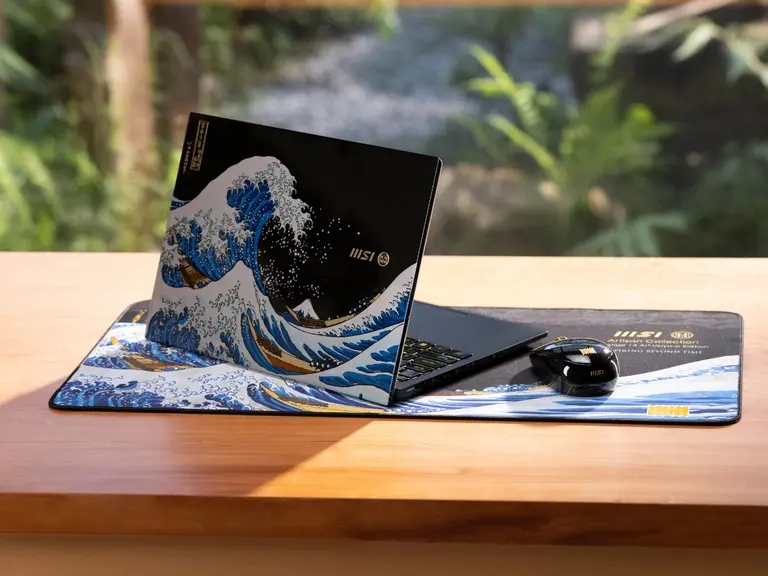




Comments
We love hearing from you. or to leave a comment.